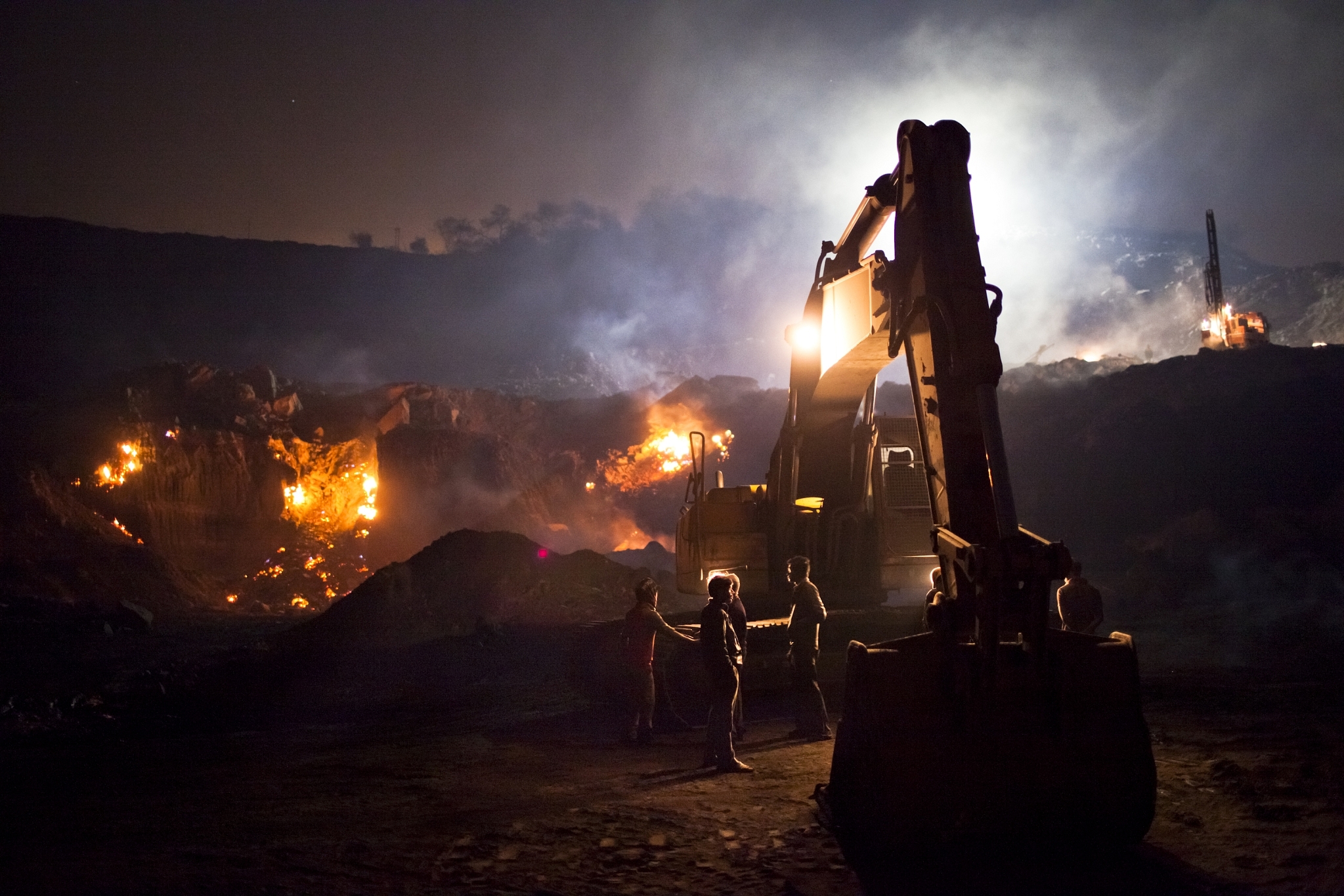News Brief
Explained: No More Pampering Coal India As Mining Industry Is All Set For A Big Transformation

Coal mining in India. (Daniel Berehulak /Getty Images)
On Wednesday (9 January), the union cabinet approved an ordinance to amend the Mines and Minerals Development and Regulation (MMDR) Act and the Coal Mines (Special Provisions) Act, 2015.
This act regulates the mining sector in India and specifies the requirement for obtaining and granting mining leases for mining operations.
Currently, the act allows the government to auction coal and lignite mining licences only to companies engaged in iron and steel, power coal washing sectors.
Quick Lowdown Of The Subject
Firstly, to get the full picture, let us understand what is captive mining or captive end use criteria. This is basically a form of mining wherein the company which mines the mineral (coal in this case) uses the mineral, without being allowed to sell the product to a third party or has restrictions placed upon it relating to what it can do with the mined coal.
In 2014 the Supreme Court had cancelled the allocation of 204 captive coal blocks and till date only 89 have been auctioned. Just 29 are currently operational.
What Will The Ordinance Do?
The ordinance will amend Section 11A of the act and open up coal mining to all firms with offices registered in India and also does away with the captive end-use-criteria.
Thus, this amendment will put an end to the captive coal block auctions in the future, and open the Indian coal sector completely for commercial mining for all local and global firms.
This amendment is expected to ensure a smooth transition to new successful bidders for the coal mines whose leases are expiring in 2020. As part of this amendment all the statutory clearances will be transferred to the new leaseholder and their validity will be extended by two years.
Specifics Of The Auction
Reportedly, the union government is planning to open up the coal sector with a large offering of more than 200 blocks for commercial coal mining in the next five years.
This has the potential to produce at least 400 million tonnes of coal at peak capacity. With this, the government hopes to stop coal imports by power plants by 2024.
The first phase of commercial coal auctions within this financial year are expected to go smoothly after the amendment. Around 334 non-captive mines are expiring on 31 March, out of which, 46 are working mines and mostly in Odisha.
The government has proposed to start the auction process for commercial coal mining this month, starting with consultations with stakeholders and releasing bid rules.
Challenge for Coal India
While broadening the base of those who can partake in the auctions is expected to fetch better prices, ease the transition from the outgoing to new leaseholder, and result in higher coal production, it creates a challenge for Coal India.
The government-owned Coal India is the world’s largest coal miner, and together with Singareni Collieries Company, accounted for 91.6 per cent of the total coal produced in the country during FY18.
After the MMDR amendment comes into force, Coal India is expected to face competition from several mining giants like Glencore Plc, BHP Group, Anglo American PLC and Peabody Energy Corp.
Anil Agarwal, chairman and founder of Vedanta, which already runs a small coal mine in India, had also expressed interest in commercial mining last year.
Assuaging Fears
The current coal minister, Pralhad Joshi, said that the amendment will not hurt Coal India. He said that the PSU was already tasked to produce one billion tonne of coal by 2023-24, but is not expected to meet this demand. This is why private participation is needed, he said.
Former coal minister, Piyush Goyal, In 2018, had hoped that private participation will bring efficiency to the coal sector by moving from an era of monopoly to competition.
The government has also promised that the entire mining approval plan would be digitised.
The Benefits
Besides government potentially earning more revenue due to higher competition and a boost in coal production, the involvement of new private mining companies will help India get access to sophisticated global mining tech.
As the ordinance also does away with the captive end-use criteria, it gives the mining companies freedom to “do what they want with the coal” by eliminating restrictions on sales, thus making the proposition of owning a coal mine more attractive.
It is also expected to create an efficient energy market in the country and ultimately help take a decisive step towards zero coal imports.
The positive reaction to this ordinance can be gauged by the fact that the steel and power stocks rallied on Thursday (9 January) in light of the announcement.
Introducing ElectionsHQ + 50 Ground Reports Project
The 2024 elections might seem easy to guess, but there are some important questions that shouldn't be missed.
Do freebies still sway voters? Do people prioritise infrastructure when voting? How will Punjab vote?
The answers to these questions provide great insights into where we, as a country, are headed in the years to come.
Swarajya is starting a project with an aim to do 50 solid ground stories and a smart commentary service on WhatsApp, a one-of-a-kind. We'd love your support during this election season.
Click below to contribute.
Latest